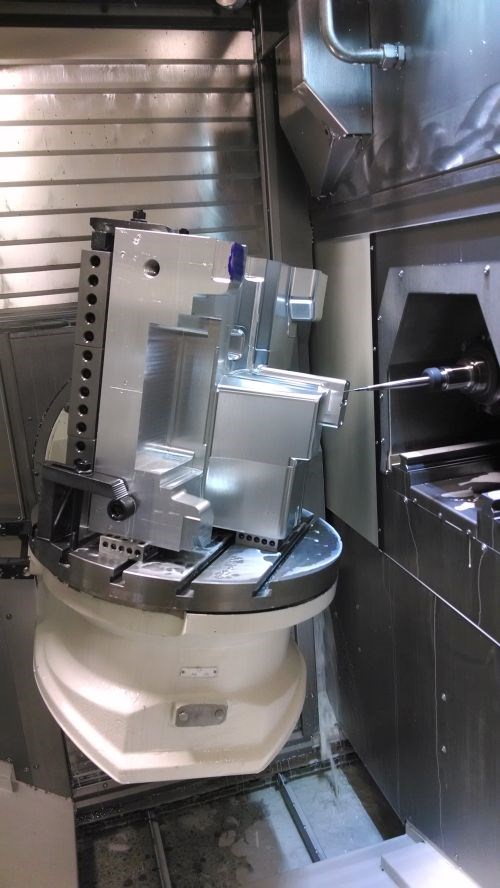Banking on Five-Axis Capability
Thanks to features that facilitate lights-out operation and an unusual, trunnion-type configuration, this shop expects its first five-axis machining center to keep it competitive for years to come.

Sable Engineering's G350 goes to work on an automotive air box mold cavity.
“My personal view is that within five to ten years, you won’t be able to compete at all without five axis.”
Those words were spoken by Andreas Batz, co-owner of Sable Engineering, in describing why the shop’s first five-axis machine likely won’t be its last. Moreover, the engineering and mold manufacturing services provider will likely choose the same model again. In addition to an unusual trunnion-type, horizontal configuration that improves access to deep features and large parts, the Grob G350 offers features like thermal compensation and automatic tool blowoff, which Batz cites as particularly useful for lights-out work. Read this article to learn more about how the new addition has improved productivity on the company’s mold and die work while also enabling it to diversify into new markets.
Related Content
-
Machining Center Spindles: What You Need to Know
Why and how to research spindle technology before purchasing a machining center.
-
The Secrets to Hard Milling Success
The Secrets to Hard Milling Success
-
6 Ways to Optimize High-Feed Milling
High-feed milling can significantly outweigh potential reliability challenges. Consider these six strategies in order to make high-feed milling successful for your business.












